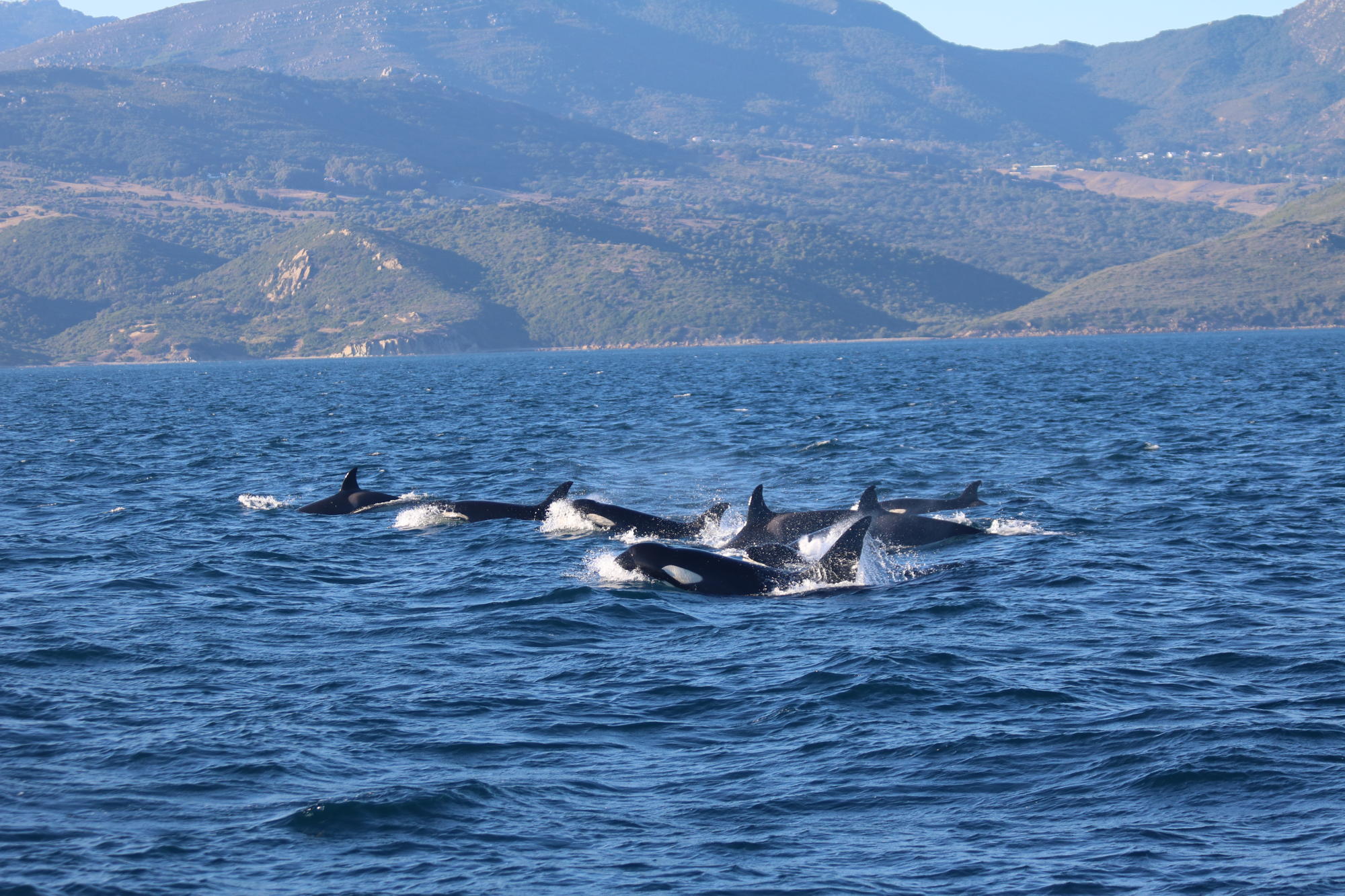Orca (Orcinus orca)

What do we know about the Orcas in the Strait of Gibraltar?
Orcas are very inventive and have developed various hunting techniques worldwide. In the Strait of Gibraltar they have learned to grab tuna from the hooks of Moroccan and Spanish fishermen. They wait patiently until the fishermen have pulled their prey up to a depth of about 20 m ... and then leave only the head of the tuna behind. Because there is the fishing hook, which they can locate with their echolocation system.
A special characteristic of the Orcas living here is, that they steal the tuna from the line of the fishermen.
Orcas are understandably not very popular with fishermen. But the Orca calves in particular benefit from catching larger fish in this way and survive the first year better than calves from subpods that do not approach the fishermen. A law now allows the line fishermen a larger catch quota, which also benefits the Orcas.
The Orca families in the Strait
As very social animals, Orcas live in family-associations that usually are led by an older female. In 2004 a total of 25 Orcas were identified in the Strait of Gibraltar. Nine belonged to a subpod, which is observed almost only in spring off Barbate. The subpod, which we observe in July and August with the line fishermen, consisted of 16 individuals - the oldest male of this group we named "Camacho", the oldest female “Matriarchin”. This group split in 2006: Two females with their offspring and Camacho formed a subpod, the third female with her offspring and Morales a second. Until 2007, both sub-pods sometimes joined together to form a pod, since 2008 we have only once been able to see the subpod of Morales. One can only speculate about the reasons for the rare sightings, probably due to the lack of tuna. Today the Camacho group consists of about 16 individuals. You can find out more about these animals in our Orca research report.
Orcas flee from Pilot Whales?
As the tuna stocks in this area continue to decline, Orca sightings are also becoming rarer - in some years they only stay here for a few weeks. But as long as they visit the Strait of Gibraltar, the Orca enthusiasts among our guests can continue to hope for an encounter with these intelligent animals.
A few times we even witnessed a thrilling chase: When the Pilot Whales have overcome the first shock after the arrival of the Orcas, they may force them out of "their" traditional territory. This spectacle is rare and unique in the world. This makes one wonder how it is possible that only four Pilot Whales follow eleven Orcas. Probable is that under water the Orcas can also very well hear the remaining 260 Pilot Whales of the Strait of Gibraltar.
Facts worth knowing

- predominantly black body
- white pattern on the underside of the body
- white patch behind each eye
- high, sword-shaped dorsal fin (males only)
- lighter saddle patch behind the dorsal fin
- large, paddle-shaped flippers
| Orca (Orcinus orca) | |
|---|---|
| Suborder: | Odontoceti (toothed whales) |
| Family: | Delphinidae (dolphins) |
| Size: | 5.5–9.8 m, 1.6–9 t |
| Size at birth: | 2–2.5 m, 180 kg |
| Life expectancy: | Males: 30–50 years Females: 50–80 years |
| Sexual maturity: | with 13 years (5,5 m) |
| Reproduction: | every 3–12 years |
| Gestation period: | 12–16 months |
| Nursing period: | up to 18 months |
| Food: | fish, squid, seals, marine birds, whales (in the Strait of Gibraltar mainly tuna); 50-100 kg/day |
| Speed: | up to 55 km/h |
| Diving time/depth: | approx. 15 min, up to 250 m (maybe even 1000 m) |
Orca – Video





































